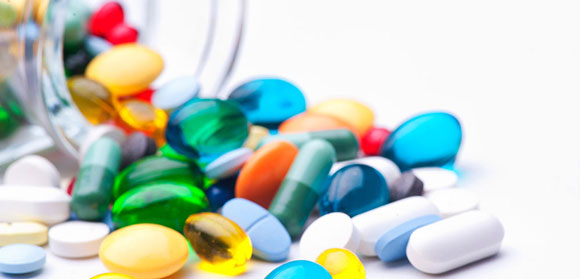2012 may be the year that the patent cliff reaches its height—with $33 billion (B) of sales at risk—but the impact of loss of exclusivity will continue to reverberate across the decade, with more than $290B of prescription drugs sales due to be exposed to generic competition between now and 2018.
"This is the worst year, but it will also be bad in succeeding years," said Jonathan de Pass, founder and CEO of EvaluatePharma, the consulting firm that compiled the data. The somewhat depressing conclusions of the report, World Preview 2018, were discussed at BIO 2012 on Tuesday, as the largest partnering-fest of the year got into its swing.
In the past 10 years, a huge amount of money has been thrown at acquisitions and the restructuring of research and development (R&D), in an attempt to replace the revenues that are under threat from patent expiries. Over the same time, EvaluatePharma estimated that $1.1 trillion has been invested in R&D in a bid to revitalize pipelines.
Pharma industry executives "have blown an awful lot of cash" in a bid to swerve around the patent cliff. Unfortunately, it looks as if "the response is not sufficient," de Pass said. The forecast returns from new drugs in 2018 "are not that great."
It's common to blame the seemingly intractable problem of low R&D productivity for all the industry's woes. But de Pass questions that, asking if the value destruction that has followed the paroxysm of acquisition and restructuring is rather a result of poor portfolio strategy and investment choices. Or to put it another way, too much money chasing too few quality R&D assets.
It seems three key factors have led the pharmaceutical industry down the wrong strategic pathway: overconfidence that the feat of bringing blockbuster products to market can be repeated; the ongoing need to drive up the share price; and the cash washing through the coffers from the sales of blockbuster drugs.
Of course, some risky acquisitions have paid off: Foster City, Calif.-based Gilead Sciences Inc.'s $11B purchase of Pharmasset Inc., of Princeton, N.J., last fall leaves it sitting on what EvaluatePharma said is the most valuable asset in any R&D pipeline at present, with its hepatitis C nucleotide analogue, PSI-7977, forecasted to have sales of $5.36B in 2018. But as EvaluatePharma also noted, "This product would ultimately have been pursued, regardless of whether Gilead owned it." (See BioWorld Today, Nov. 22, 2011.)
The low rates of return on R&D spending raises the question of whether certain companies should continue to invest in new product development. AstraZeneca plc is a case in point: According to EvaluatePharma's figures, the current market capitalization of $50B is 30% lower than the company's aggregate value of its entire portfolio, at $72B.
London-based AstraZeneca Plc may consider it has had more than its fair share of failures recently, but that is not to say it does not have value hidden in longer-term R&D investments, as in the case of Bristol-Myers Squibb Co. The New York-based company's share price rose by 33% in 2011 on the back of Eliquis, an anticoagulant acquired in 2001 as part of the $7.8B acquisition DuPont Pharmaceuticals, when the product was in phase 1, and Yervoy, a treatment for melanoma, which BMS in-licensed from Medarex in 2004, five years before it bought all the company for $2.4B in 2009.
No doubt the patent cliff is reshaping the industry, but the good news is that the market for prescription drugs will grow by 3.1% per year between 2011 and 2018, to reach $885B, according to EvaluatePharma's figures, which are compiled from the forecasts of the leading industry analysts.
The value locked up in biotech pipelines is highlighted by the prediction that the percentage of sales from biotech products within the top 100 best-selling drugs in the world will increase from 34% in 2011 to 49% in 2018. In the overall market, biologics will account for 23% of sales, against a 19% share in 2011. Total sales of biologics will grow 51%, rising from $142B to $215B.
Roche AG, of Basel, Switzerland, will lead the field, with sales of biologic drugs valued at $32.6B. But the patent cliff will cast a shadow over the one-time leader of the sector, Amgen Inc., of Thousand Oaks, Calif., which is predicted to drop three places to number five in the biotech sales league table, on the back of a 1% per annum decline in sales of biologics, that will see forecast turnover decline from $14.4B to $13.6B.
In terms of which company will make the best job of finessing its way around the patent cliff, Novartis AG, of Basel, is predicted to be the top pharma in terms of prescription drugs in 2018, with sales of $51.3B. That will leave former number one Pfizer Inc., of New York, lagging $3B behind.
The biggest riser in biotech will be Gilead, which is set to climb seven places to 15, with sales of $15.1B, which is mainly down to the company's strong HIV franchise, and also will rest on its 2012 acquisition of the HCV drug GS-7977, when it was a development-stage product.
Nuala Moran
BioWorld Today


























































